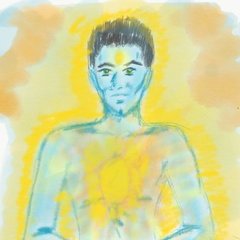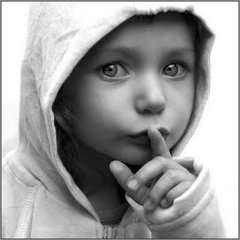Search the Community
Showing results for tags 'prana'.
Found 9 results
-
Hello, I hope this is a forum I’ve been looking to find for a long time to discuss anything regarding true health and with the understanding that not everything is for everyone, even ancient teachings like Ayurveda and Chinese medicine (which I resonate deeply with), as a wellness therapist with over 20 years experience. many thanks! Christiaan
-
I first learned pranayama from my late paternal grandfather when I was around 14 years old, where he taught me the basics, and also the more commonly known breath retention/holding pattern between the inhalation and the exhalation (with lungs full). The technical terminology for pranayama are as follows -- Puraka - inhalation Kumbhaka - hold Rechaka - exhalation Now, Kumbhaka is of two kinds -- internal (Antara) and external (bahya). What it means really is, that the first type is done after inhalation, and the other is done after exhalation (and before the next inhalation). Breath-holding is an advanced practice, so beginners are advised against it. But technically, the meditation part of pranayama occurs when the breath stops. The idea is, when the breath stops, the mind too stops (pauses) temporarily. There are various kinds of pranayama that are popularly practiced, and mostly they are for different health benefits, to treat specific disorders, or to balance specific elements/humors (known as Dosha) within the practitioner, according to their Ayurvedic constitution. A most powerful one is called Nadi Shodhan Pranayama, which in its simplest form is called anuloma-viloma (alternate nostril breathing) and its primary purpose is to balance the energies in the two channels ida and pingala, which run alongside the central channel (sushumna), to the left and right side, respectively. Ida channel runs the "feminine" energy, and pingala, the "masculine" energy (yin and yang, respectively). Ida is symbolized by the moon, and pingala, by the sun. Ida has the color white, and pingala, yellow/orange (there are other variations to the colors, so don't read much into this). By balancing the two channels, the subtle body (and thereby the physical body) is gradually brought to balance. The result of this practice on the mind is very good -- the mind calms and settles down, and it helps with entering into meditation. There are other pranayama techniques such as bhastrika (bellows) which increases the fire element (yang energy) , kapalabhati (skull-shining) is also a cleansing process, and increases the fire element, and primarily focuses on the head, brings mental clarity and energizes the 3rd eye, bhramari (bee) which cools the system down, and removes stress, sitali (cooling) which directly cools the system and pacifies fire element imbalances, and so on. I studied Tamil siddhar yoga for a few years with a traditional yogi, and with his practice, I found a very different kind of pranayama, with the focus on activating kundalini energy in the central channel (raising the kundalini). This was perhaps the most difficult pranayama technique I learnt, and after about six months of breathing without holds, introduced both internal and external holds. The pranayama practice itself was introduced after about a year of simple asana practice which opened up channels within the body. The first kriya was called meru-danda-shuddhi (spinal column purification), which he made me do for about 6 months. The first few weeks of this practice resulted in intense pressure in the head, as the channels there were purified and tonified, in order to handle the rise of kundalini. With time, this balanced out and the channels were sufficiently purified. At which point he added some simple yoga asanas, which opened up specific channels. The thing is, he offered different asanas for different people (with different body-types and constitutions). For some he insisted on head stands (shirshasana), for others, just the shoulder stand (sarvangasana) was sufficient. The pranayama was introduced after another six months or so of practice. First step to learn in this pranayama was what he called "glottis control". With this, a very subtle control of the epiglottis was developed, such that the breath became soft, long and narrow (if that makes sense). After developing glottis control, he added the bandhas (holds) -- first was mulabandha (root lock/hold) -- which involved subtle tightening of the anal sphincter, which activates the muladhara chakra. The second was the udiyanabandha (the solar plexus lock/hold) -- this created a bridge between the lower chakras (muladhara, svadisthana and manipura) and the heart chakra. Then he introduced the jalandhara bandha (the throat lock/hold), which created a bridge between the heart and the third eye. Once the energy pierces the third eye, it will rise to the crown. There are of course far more detailed descriptions and explanations of these bandhas available if one finds a good reference material. There are different rules for ratio of inhalation, exhalation and retention/hold, depending on whether one is a brahmachari (celibate) or a householder (one size doesn't fit all). First we practiced with inhalation and exhalation ratios. Then holds were introduced. The main practice was sitting in vajrasana (thunderbolt/diamond posture) and cycling through four hand mudras, along with the bandhas and releasing etc. P.S. I added this post as there is a breath retention topic in the daoist sub-forum pertaining to neidan. Thought, it might be relevant, but didn't want to muddy the waters there.
- 31 replies
-
- 4
-

-

-

Chanting Deity/Buddha names and The Cosmic Doctrine
JustARandomPanda posted a topic in Hindu Discussion
Popping in to say Hi to a bunch of old timer Dao Bums. Also to give an update on some things I've been learning after a LONG time of self work. A lot of my growth I credit to assorted teachers I either follow online via Youtube such as Sadhguru Jaggi Vasudev and from assorted books such as Master Nan Huai-Chin and Bill Bodri. I think...(this is so amazing) I have a new appreciation of the power of chanting a Buddha or Hindu deity name and what it is doing on an energetic level. I began this practice after a particularly convincing, long essay on this practice by Master Nan Huai-Chin. I was blown away by his explanation of why this is THE premier method for many masters in the Kali Yuga age. Just to hammer it home Master Nan said this was his own method he eventually settled on for himself! After decades of so many other practices that he did...he finally reached such an incredible level he became aware of the power of this one practice and finally settled on it over anything else. Or as Sadhguru once quipped, "you can loot each other's loot bags" (ie. storehouse of prajna-wisdom and capabilities). Well that was enough to convince me to give it a try and WOW! At least in my instance, he wasn't kidding. I have had super fast progress using this method like no other. And it's because of Sadhguru I think I understand why this practice works so well. Sadhguru says that earth (and the cosmos) has had many stupendously high level Masters but the vast majority never have public teaching careers nor have lots of disciples. The karma that taking on the responsibility of public teaching and of lots of disciples is pretty far reaching. So most masters don't go this route. Nonetheless he says such beings don't leave the planet without wishing to contribute something for the betterment of humanity. They leave their contribution in the form of shakti. The karma is so much less by giving their teachings in this way as opposed to the way Sadhguru is doing it. Their names (and maybe other patterns such as sitting a certain way at a certain location) encode everything they themselves have learned and mastered and they leave it for people to discover (or chant if their name is known). By encountering their 'energy signature' you are downloading everything they themselves learned and mastered. And I do mean - *everything*. On a second front: I've encountered an early 20th century Dion Fortune book called The Cosmic Doctrine. I'm finally convinced Ms. Fortune had a higher Plane guru/guide because so much of that book aligns with things I've heard Sadhguru also give talks about. Cosmic Doctrine is a detailed Kriya Yoga/Nei Gong book! Yes it's talking about the shakti at a cosmos level but the laws that govern the cosmos are the same laws that occur inside us as Sadhguru is always saying. So when I started to read it I was like - Holy Moly! The West finally has it's own authentic contribution to human consciousness evolution alongside China, the Middle East and India! The Cosmic Doctrine is a gem that needs to be translated into other languages if it isn't already and be taught the world over imo. It's also in the public domain now and can be freely downloaded in pdf form. It's VERY detailed and you can read it quite successfully as a Nei Gong/Kriya Shakti book. I finally figured out the real Sri Yantra is best "built" inside the human body as is the Shiva Yantra or any other "yantra" depending on the results one is aiming for. Finally had that "aha" moment from understanding what The Cosmic Doctrine is teaching combined with several Sadhguru videos. I'm guessing it's easiest to get such operational yantras inside your own body by chanting a Buddha or Deity name that's associated with the benefits associated with those 2 yantras (or whichever other yantra appeals to you). And so much more. Just from chanting a name (or names)! It's the difference between driving at high speed on a constantly well-maintained highway vs. having to pave the road yourself before you can get anywhere. Here's a link that tells various names of various Buddhas of the past and what you can "download" just from chanting his/her name. Pick one that sounds appealing and give it a shot. My results have been so amazing from just this one practice. It sounds so corny but you download SO much! And the Cosmic Doctrine explains the mechanics of WHY and HOW that happens. p.s. The name I chant regularly is Bei-Shah-Jei Lapis Lazuli Medicine Buddha and according to Master Nan Huai-Chin he works at the alaya level (8th consciousness) of karmic greed - ie. transforms it into incredible generosity. He also increases one's affinity to good health and healing. You'll also have much more beautiful, healthful bodies upon rebirth from chanting his name. I started receiving noticeable changes on the Second DAY! For me at least name chanting is a fabulous, super fast Nei-Gong/Yoga practice. I can feel the shakti changes taking place inside my body when I name chant. So excited I feel like a little puppy running around with a wagging tail at discovering how joyful and bountiful life is with this one simple practice. -

Advaita Vedanta and Kungfu - An Article by Huai Hsiang Wang
dwai posted a topic in General Discussion
-

Some of my musing about the relationship between breath and life force
William. posted a topic in General Discussion
I don't think I believe that breathing alone keeps us alive. So I don't feel it is the action of breathing that generates chi in the body. Placing attention on the body generates sensation.. and sensation attracts attention. I feel that awareness of sensation generates the chi in the body. Breathing makes sure that there is a continuous awareness in the body on some level. I feel that breathing balances the chi by spreading out the intensity in the body so it feels smooth and the chi gets everywhere it needs to be. So intense feelings like pain and discomfort might be because the chi is only restricted to a certain area and cannot find it's way out to its proper place in the body. Then that means, if I can stay aware of body sensations, then I don't need to breathe as much. I'm spreading the chi smoothly already by having my light attention spread globally throughout the body. It's not perfect yet. When I meditate on sensation, my breathing slows down until I can't really tell the difference between breathing in and breathing out. But what is left behind is the sensation of the breath. What left behind is simply sensation where breathing used to be. -

Is it possible to transmit energy through a video?
lucifeh posted a topic in Esoteric and Occult Discussion
Hi, I really like ASMR ( Autonomous Sensory Meridian Response ) videos and among the various youtube channels that make ASMR videos there is one that It ALWAYS make me "tingle" at the start, even when the audio is almost inaudible, it doesn't fail to give me a tingle. For example: So I am thinking...Perhaps it's possible to inprint some sort of "energy" on a video? Or her videos have some sort of very low frequency wich I find very comfortable with to trigger my asmr? -
I have found the similarities between the Indian/Yogic/Vedic and the Daoist internal traditions extremely heartening. Here are two systems, both going back millennia in antiquity, having developed with some cross-pollination (via cultural exchanges in the early history/late pre-historic periods perhaps), but generally independent of each other during the formative periods (more than 5000 years ago). The one missing link was that the Indian system clearly categorizes Prana as having five constituent winds - Prana, Apana, Samana, Vyana and Udana Vayus. Each of these have specific roles to play in the human bio-energetic system (and the psycho-physiology as well). Then as I was reading Damo Mitchell's excellent book on Neigong (Heavenly Streams), I found a section that is pretty much articulated in this blog post as well -- http://www.scholarsage.com/five-elements-2/ light shen yi po zhi hun colour red yellow white blue green movement expansion division contraction sinking forwards element fire earth metal water wood The overlap (and biological functions of these) are stark with the Pancha Vayus. Good illustration is provided here -- http://sequencewiz.org/2014/09/03/5-vayus/ Would love more thoughts on this.
-
99.99% of the time the best translation of प्राणायाम is "don't waste your breath..." There are (of course) other possibilities...
-
http://www.astrojyoti.com/sandilyaupanishad.htm




